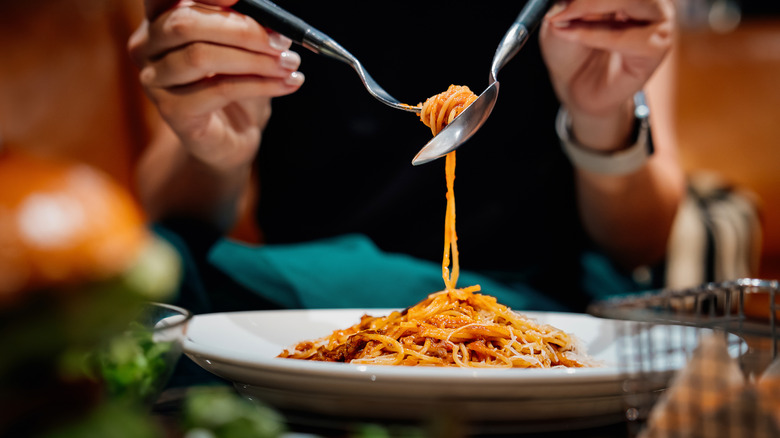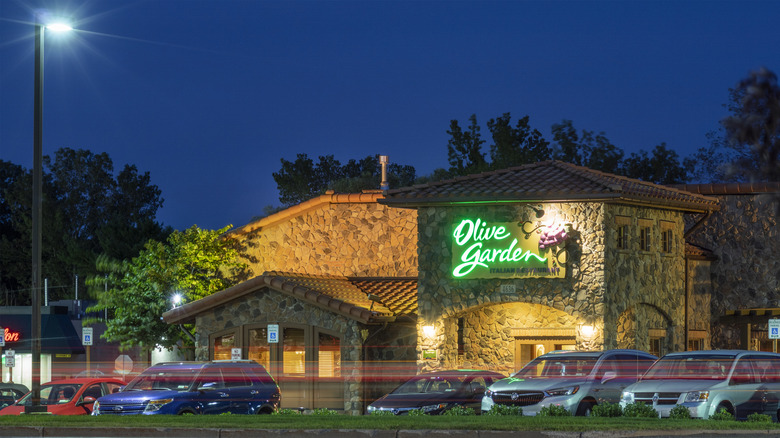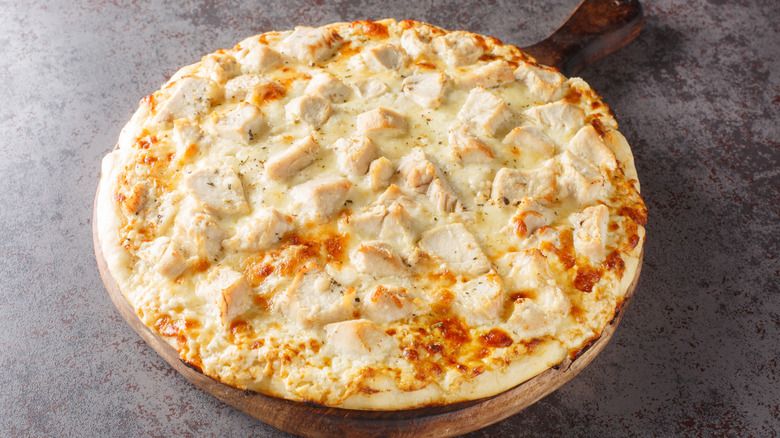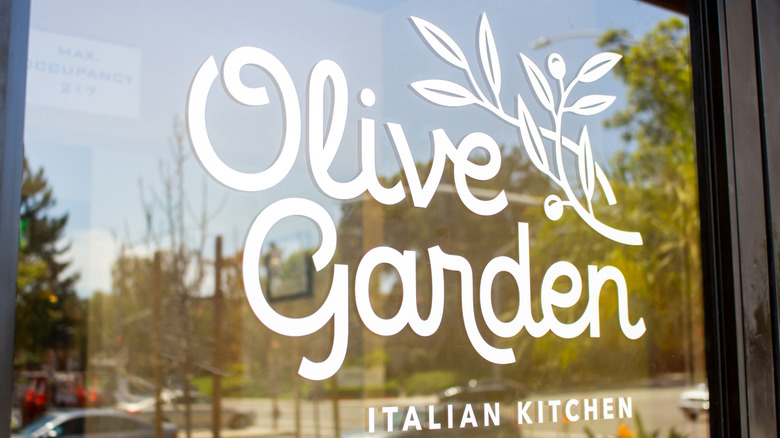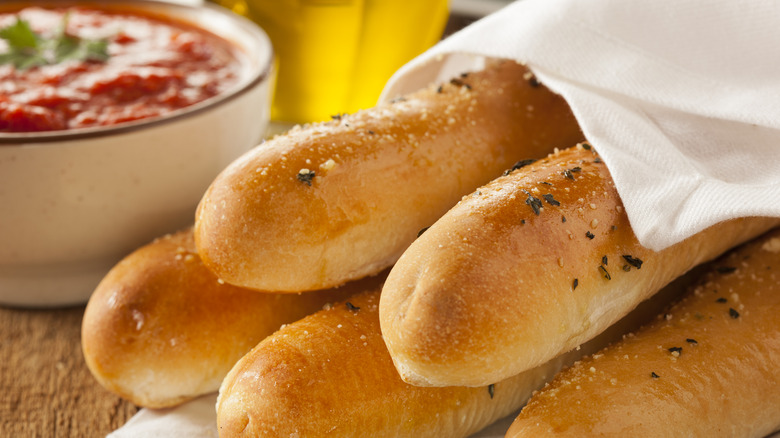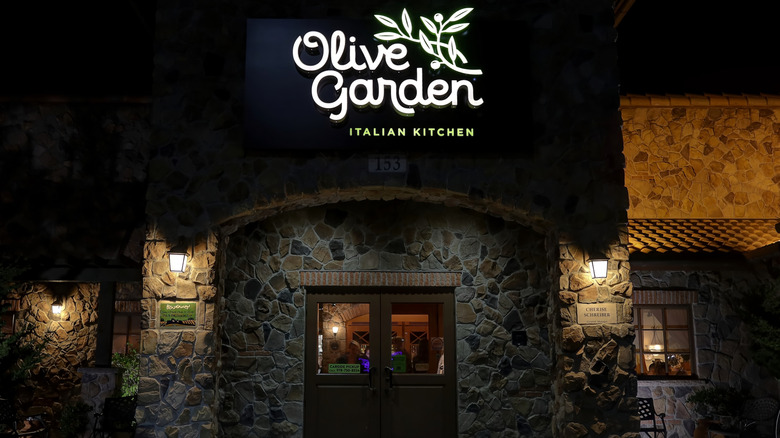This Italian Restaurant Chain Is No Longer America's Favorite. Here's Why
Olive Garden has long been a staple in the American casual dining scene — famous for its unlimited breadsticks, creamy Alfredo, and the kind of family-style service that feels like a warm hug. However, things are changing and after years at the top, Olive Garden has been unseated as America's favorite casual dining restaurant by Texas Roadhouse. And it's not just about one chain steakhouse ascending to the top — Olive Garden has made some changes that are coming back to haunt it. From quietly ditching popular menu items to refusing to adopt prices that no longer seem competitive, the Italian chain has a piled up some questionable choices.
And while we're all curious about the untold truth behind Olive Garden's decline, some of the most visible steps are playing out right in front of diners. Olive Garden still has a large customer base and is recognized as a big brand – but this trajectory is a reminder that clinging to nostalgia to maintain a position at the top of the market is not enough. Let's take a closer look at how the once king of casual dining lost its throne, and what may lie ahead for the former frontrunner.
Olive Garden has been dethroned by Texas Roadhouse
In 2024, the crown definitively passed from America's former favorite casual dining chain, Olive Garden, to a new champion in Texas Roadhouse. According to a report from Technomic, Texas Roadhouse roared to the front with a 16% sales growth from the previous year, which reached $5.4 billion in revenue based on industry sales data. Meanwhile, Olive Garden's sales growth increased just 1%, with sales amounting to $5.1 billion in revenue. Those figures aren't out of this world by any means, but they indicate a trend of shifting diners' tastes — and Texas Roadhouse is clearly serving up something people want more of.
Olive Garden, however, has taken a relatively safe route. The menu hasn't evolved drastically, and while that's reassuring to some, it might not be competitive in our current foodie era. To be clear, Olive Garden is not in distress — but the competition has tightened. The change speaks as much to how America eats today as it does to any misstep. And yet, the unseating is a pivotal moment — and an opportunity for Olive Garden to change if it hopes to reclaim the top seat at the table.
The chain refuses to offer real discounts
As much of the casual dining sector tries to push aggressive promotions to draw in budget-conscious diners, Olive Garden is heading in another direction — and it's turning some heads. Even as food prices have climbed and wallets have tightened, the restaurant has largely avoided the temptation to offer deep discounts or the limited-time deals. This isn't a new strategy. Darden Restaurants, the parent company of Olive Garden, is more focused on a long-term value strategy rather than short-term deals. In other words, it would rather keep prices steady than cut menu costs in the pursuit of traffic spikes.
While competitors such as Applebee's and McDonald's are bundling meals or rolling out specials each season, Olive Garden has remained steady on the food side (though many of its offerings today are priced higher than they were before the pandemic). That being said, Olive Garden's approach at least maintains an emphasis on quality and consistency. But in a competitive market, where diners value options that make them feel cared for as well as filled up, the lack of a real discount might actually be costing the chain more than it realizes.
It has discontinued fan-favorite menu items
Over the past few years, Olive Garden has quietly been doing away with many of its most popular menu items – and loyal customers have certainly noticed. From the savory Chicken Alfredo Pizza to the rich Smoked Mozzarella Fonduta, a few fan favorites have disappeared from the menu with little explanation or warning. Some classics, however, like the Steak Gorgonzola Alfredo or the Stuffed Chicken Marsala have been rumored to be making a comeback to the menu. These changes are usually part of larger menu-slimming efforts, designed to make the kitchen more efficient and to decrease food waste.
From a business angle, a simplified menu cuts down on prep time, training requirements and ingredient costs. But, from a customer standpoint, it can feel like a bummer to lose — particularly when go-to dishes disappear with no similarly strong stand-in. Reddit users have reflected on "the good old days" with the Olive Garden menu. Some people even plan visits, intending to order a favorite, only to discover that it is no longer available. Streamlining may make things easier behind the scenes, but for customers, it's the front-of-house flavor and variety that keeps them coming back — and right now, some feel that's missing.
Its menu prices keep climbing
Perhaps the biggest complaint of Olive Garden diners these days is the rising prices. Inflation has hit all restaurants hard, but for many people, Olive Garden's menu price hikes have outstripped the value of what's being served. Once considered a relatively cheap dining option, it's now tipping into special occasion territory for some families, with more and more diners generally preferring to eat at home these days. A once $12-$14 pasta dish can now be well over $18, depending on the neighborhood. Throw in a beverage, perhaps an appetizer or dessert, and all of a sudden the bill is much higher than a few years ago — especially when compared to fast-casual chains that offer similarly portioned dishes for less money. On a recent earnings call, the Darden-owned chain attributed higher prices at its chains to inflation.
Customers have also commented that while prices have risen, portion sizes haven't necessarily increased. There is a sense that the brand is pricing itself beyond reach for those lower-income families that had been such loyal customers. Olive Garden is trying to offer price certainty, but in a world with ever more fierce competition, every dollar counts. And these days, some customers are asking themselves just how far their dollars will go elsewhere.
Wait times are getting longer
Longer wait times have become a common point of frustration for Olive Garden guests. Customers on platforms such as Reddit have reported waiting anywhere from 20 minutes to an hour or longer despite there only being a few people inside the restaurants. This phenomenon, which had been called a "false wait," was flagged by Business Insider. The suggestion is that some locations might intentionally delay seating guests to manage server workloads or encourage bar sales, regardless of actual table availability. Past employees from Olive Garden have also spoken about extended wait times, pointing out that chronic understaffing and ticket-time delays in the kitchen during rush hour can seriously affect orders. Another commenter said that the servers are only allowed to take three tables at a time, even if there are many customers waiting.
To try and fix this, Darden Restaurants publicly said it is aiming to improve service to be quicker during a 2025 fiscal first quarter earnings call. It has noted that speed of service had not kept pace with expectations and outlined efforts to improve kitchen efficiency and front-of-house coordination. Simply put, slower Olive Garden service doesn't exist just as individual anecdotes — it's connected to wider operational bottlenecks and service gaps. For hungry customers, slower service can be a frustrating criticism that send them looking elsewhere on their next dinner outing.
Breadstick scandal backlash
Breadsticks are literally a huge selling point at Olive Garden, so when there was outrage about one breadstick, people noticed. In 2024, a TikTok post went viral when a customer said that she was served a breadstick with what looked like ink on it. She posted a photo to social media of what's believed to be blue or black ink imprinted directly into the breadstick's surface — and concern ensued from those who saw it. The image spread rapidly across social media with users speculating on how it could have happened. Some thought it was from packaging or a marker used by a food handler, while others focused on food safety protocols and quality control at the restaurant.
Olive Garden responded quickly to the incident, and according to reports, also contacted the customer who was given a $100 gift certificate as compensation. Still, the damage was done. For a brand with an identity built on unlimited breadsticks and warm hospitality, this issue served as a larger conversation about cleanliness, execution, consistency, and attention to detail. While most guests understand that errors are occasionally made in busy kitchens, the public nature of this incident — not to mention that it was over such an iconic menu item — only added to the backlash. They're more than a side dish at Olive Garden, they're a symbol for the entire experience. So when one appears looking anything but perfect, people take notice — and talk.
The rat's foot soup incident
One of the more scandalous stories connected to Olive Garden in recent years is one involving a diner who claimed that he allegedly found a rat's foot in his soup. The incident, reported in 2023, made national headlines after a Michigan man shared that he was halfway through his minestrone soup when he discovered what he believed to be a rat's foot floating in the bowl.
The customer put photos online of a small, gray oject with what looked like claws, and as expected, the news spread like wildfire. Some people reacted with disbelief, and others with horror. Olive Garden had the health department come for an inspection two days after the incident and it was cleared from having any issues to do with rats in its kitchens. Regardless, the man went on to sue Olive Garden – escalating the scandal — as he said he was having difficulties with eating and sleeping because of the trauma this caused. While there was no verification of the claim, the idea that a rodent appendage could appear in a soup bowl was enough to rattle the confidence of some guests in the cleanliness of the chain, and the oversight of its kitchens.
Mixed employee reviews online
Though Olive Garden aims to provide a warm, inviting experience for guests, when it comes to what's really going on behind the scenes, reviews from both current and former employees paint a slightly different picture. Workers have revealed what it's really like to work at Olive Garden, and like many businesses, there's good and bad. Some workers highlighted the tips on busy nights and tight-knit teams among long-term staff, while others have pointed to Olive Garden's training programs as a solid foundation for a career working in restaurants. But there's also no shortage of negative feedback. Common complaints include being stretched too thin, no managerial backing, and being encouraged to upsell even when it feels inappropriate.
Several former employees said that staff reductions and erratic scheduling make work-life balance challenging for kitchen and serving staff in particular. One employee even vented out of frustration calling their time there "soul crushing" and not "for the faint of heart." The mixed reviews for working at Olive Garden indicate that there may be room for improvement when it comes to staff retention and morale. And, at least in the hospitality world, happy employees often mean happy customers.
Declining food quality
Olive Garden has come under increasing criticism in recent years for the consistency and caliber of its food. Customers complain about overcooked pasta, wet sauces, limp salads, and breadsticks that land either too hard or are barely warm. Some even wonder if Olive Garden makes its soups fresh daily. One notable example comes from a report by Starboard Value, which sharply criticized Olive Garden's food preparation practices – most famously, the decision not to salt pasta water, allegedly to preserve the longevity of cooking pots. Unfortunately this has led to an unappetizing result for the chain's pasta.
In retaliation, Olive Garden rolled out kitchen standardization procedures to streamline operations and quality at its 800-plus locations. Although it's made things more efficient, critics say it's done so at the cost of freshness and flavor. The big problem isn't that Olive Garden food is inedible; it's that the quality of the food no longer lives up to the expectations that the brand set during its heyday. For diners craving comfort and consistency, even small drops in quality can leave a lasting impression.
It lost its Italian charm
One of the subtler, yet noticeable, shifts at Olive Garden is the gradual loss of its signature Italian charm. What was once an integral part of the brand — a cozy, Tuscan-inspired aesthetic with warm lighting, faux-stone walls and rustic details — has gradually been replaced by a more modern, minimalist look that many longtime customers find generic.
Over the past decade, Olive Garden has gone through a corporate-wide makeover designed to revamp the dining at its restaurants. The point was to modernize and slim it down, and opinions about the look that emerged are split. Customers on Reddit have complained that at new locations, the dining experience is "cold," "stripped down," or "literally just any other chain restaurant" –- and are missing the ambiance that used to make a visit feel, well, Italian. In a crowded dining landscape, ambiance still matters — and for many of its former fans, Olive Garden just doesn't feel Italian anymore.
Dining there no longer feels like a treat
At one point in time, dining at Olive Garden felt like an occasion – at least that's what the commercials aimed to convey. Whether it meant celebrating a birthday with dinner, holding a graduation luncheon, or simply enjoying a night with the family, there were warm breadsticks, delicious Alfredo, and an Italian theme that made it feel like more than just a regular dinner — it was a treat! But for many customers, meal at Olive Garden now lacks any feeling of a special night out.
Customers have cited a range of reasons for this such as higher prices, smaller portions, scaled-down decor, and less individualized service. It's difficult to justify looking forward to getting food on the table when the meal feels rushed, or if the food shows up lukewarm. The decline hasn't always been dramatic — it's subtle. The food is still recognizable and the staff generally friendly. Yet what is lacking is that extra little touch that once distinguished Olive Garden among other giant chain restaurants. Some longtime customers say that they now associate the restaurant with convenience, or the past, rather than with celebration.
